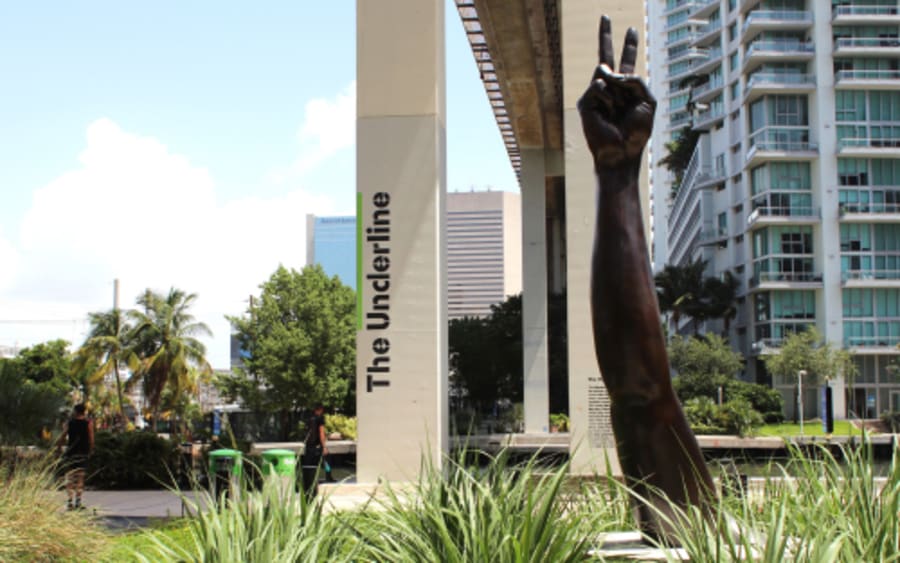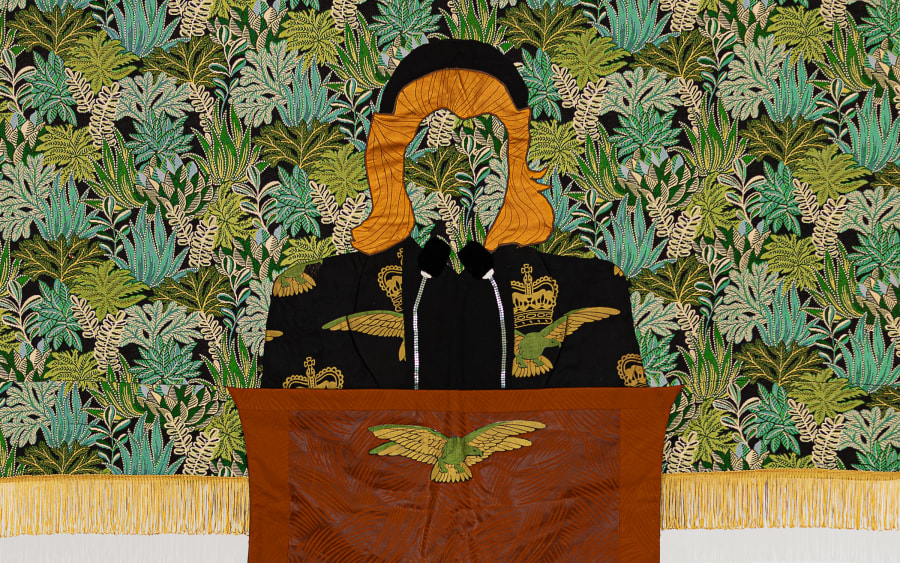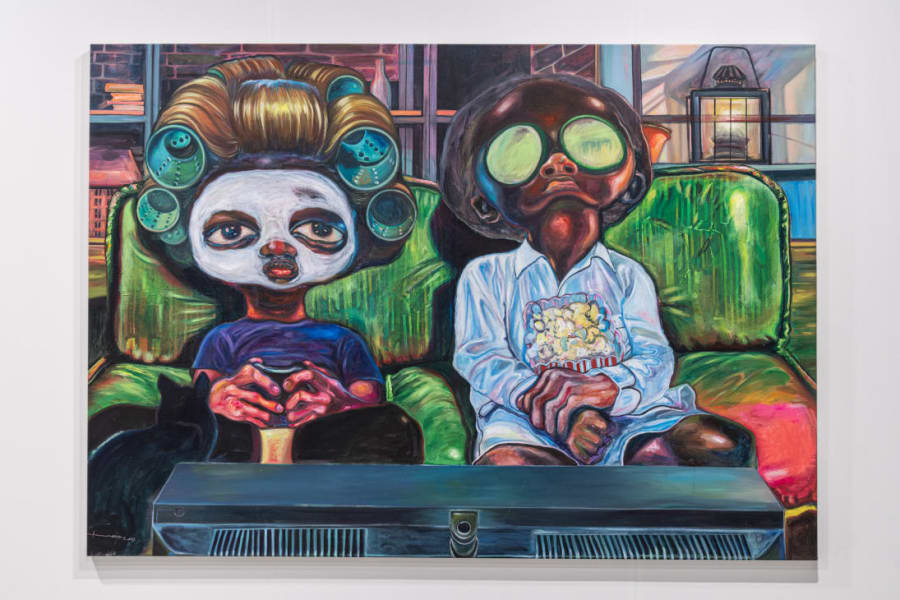邁阿密海灘
巴斯藝術博物館(The Bass Museum of Art)以其「Social Assembly: Welcome to the Museum」展覽致敬邁阿密這座冬日藝術之都,激發全新訪客體驗。展覽包括assume vivid astro focus(AVAF)萬花筒般絢麗的裝置藝術《XI》,該作品由德.拉.克魯茲收藏(de la Cruz Collection)捐贈,也是已故慈善家羅莎.德.拉.克魯茲(Rosa de la Cruz)最鍾愛的作品。巴斯藝術博物館還正在展出Rachel Feinstein的首個本地個展「The Miami Years」。
展覽「The Big World Alternative Landscapes of the Modern Era」由策展人Silvia Barisione和Lea Nickles重新構思,從Wolfsonian-FIU博物館的永久館藏中汲取靈感,重新詮釋景觀藝術,從田園風光到衰敗城市皆涵蓋其中。在參觀時,千萬不要錯過Harry Clarke的彩繪玻璃傑作《Geneva Window》,這件作品充滿爭議,其背後的故事同樣引人入勝,值得駐足細品。
聖地牙哥藝術家Andrea Chung在北邁阿密當代藝術博物館(Museum of Contemporary Art North Miami)的展覽「Between Too Late and Too Early」中探討了島國的殖民關係。展覽由Adeze Wilford策展,展出80件藝術品,其中包括一個全新糖瓶裝置,將物料改變並重構歷史。現場還有紐約-邁阿密藝術家兼互動設計師Smita Sen首次展出的「Embodied」及駐邁阿密藝術家Nicole Salcedo的作品《Earth Gate》。
溫伍德藝術區(Wynwood Art District)
馬古列斯倉庫珍藏館(The Margulies Collection at the Warehouse)的年度展覽「Historic Works from the Margulies Collection 1930's-1970's」正在展出,彙聚了羅伊・李奇登斯坦(Roy Lichtenstein)、路易絲.奈維森(Louise Nevelson)和野口勇(Isamu Noguchi)等藝術家的代表作。同期還有藝術家特展和與來自巴塞羅那的收藏館共同舉辦的「Spanish Photography from Foto Colectania Collection in Barcelona」。Bakehouse Art Complex專注展示邁阿密藝術家的作品,包括Patricia Monclús的裝置藝術個展「Pico Radial」,這場展覽將Swenson藝廊巧妙地變為鬥雞場,展出了一段AI生成的雞主題滑稽視頻流。
邁阿密設計區(Miami Design District)
Dacra將一年一度的Craig Robins Collection重新整合,由Karen Grimson策展,特別呈獻德國藝術家Kai Althoff和Jana Euler的作品,展覽中包括Euler的四件最新創作,以及畫家Jill Mulleady、Alteronce Gumby和Janiva Ellis的藏品。邁阿密當代藝術學院博物館(Institute of Contemporary Art Miami)則在成立十周年之際展出了日本波普藝術家田名網敬一(Keiichi Tanaami,1936-2024)豐碩的創作成果,這些色彩豐富且生動的多媒體藝術作品對流行文化和消費主義展開探索。展覽還包括常駐紐約的抽象畫家露西.布爾(Lucy Bull)和中國畫家丁士倫在美國博物館的首展,以及法國藝術家瑪格麗特.休莫(Marguerite Humeau)的雕塑藝術和影像裝置。
Juan Carlos Maldonado Collection的「Secret Affinities/ Aesthetics of Two Worlds」展覽由Ariel Jiménez策展,彙集前哥倫布時期、現代及當代的紡織品、器皿和圖像,展出來自歐洲、亞洲和美洲的藝術作品,旨在突出記錄和保護生命的共通手法。
Little River
Alexandre Arrechea的裝置作品《Bare Tool (Herramienta desnuda)》通過打水漂的隱喻來探索事情起因與反應。在Locust Projects展出的三個主題行為包括沉浸式影像,以及在天花板地板的啟動裝置。
Allapattah
在El Espacio 23的展覽「Mirror of the Mind: Figuration in the Jorge M. Pérez Collection」中,120位藝術家探討了情感與身體之間的聯繫。這一多媒體展覽由El Espacio 23的Patricia García-Vélez Hanna和Anelys Alvarez策展,分為六個部分。Marquez Art Projects也在項目成立第二年呈獻了最新的委託創作繪畫,讓在斯洛文尼亞出生、現居英國的藝術家Katarina Caserman在美國首次亮相。此外,Marquez Family Collection購得的最新藏品也正在公開展出。
佔地10萬平方英尺的魯貝爾博物館(Rubell Museum)展覽重點聚焦於巴西藝術家Solange Pessoa的觸覺作品、美國藝術家Omari Douglin的最新收藏,以及英國藝術家、前職業鐵人三項運動員、2024年魯貝爾博物館駐館藝術家Vanessa Raw的全新心理景觀畫作。
邁阿密市中心
在邁阿密佩雷斯藝術博物館(Pérez Art Museum Miami),「Xican-a.o.x.Body」多媒體展覽由Gilbert Vicario、Cecilia Fajardo-Hill和Marissa Del Toro策展,彙聚了六十年來身份認同為Xicanx的藝術家,將身體作為表達的場所。此外,展館還展出了「每一種聲音都是時間的形狀」(Every Sound Is a Shape of Time)收藏展、畫家Calida Rawles的個展「遠離潮汐」(Away with the Tides)以及何賽.帕拉(José Parlá)的邁阿密回歸展「Homecoming」。
南邁阿密
佛羅里達國際大學的Patricia & Phillip Frost Art Museum-FIU展出了馬拉威出生的南非藝術家比莉.贊格瓦(Billie Zangewa)的個展「夢想之地」(Field of Dreams)。在精美的手工縫製布料旁,贊格瓦在後疫情時代對情感、人類現狀和社會挑戰的思考中,推出了斜面古董鏡面藝術作品。
北邁阿密
佛羅里達州羅德岱堡(Fort Lauderdale)的諾瓦東南大學藝術博物館(NSU Art Museum)展出了藝術家Rose B. Simpson受普韋布洛陶器(Pueblo pottery)啟發創作的多媒體作品,以及LGBTQIA+運動支持者vanessa german的雕塑、儀式和沉浸式裝置。
眾多精彩紛呈的展覽也同時展出,如荷蘭畫家Jacqueline de Jong(1939-2024)的展覽「Vicious Circles」,邁阿密藝術家Cici McMonigle的個展「Creatures for the Divine」,彼得.哈雷(Peter Halley)的全新裝置作品,以及最新購藏的1,800件喬爾.邁耶羅維茨(Joel Meyerowitz)的攝影作品。
Girls' Club Collection的「No Looking Back」展覽作品來自Francie Bishop Good及與大衛.霍維茨(David Horvitz)的收藏品,將安娜.曼迪耶塔(Ana Mendieta)、Samantha Salzinger、佐佐木香菜子(Kanako Sasaki)、辛蒂.雪曼(Cindy Sherman)等女性藝術家的照片作品互相交織。
諾頓藝術博物館(Norton Museum of Art)的展覽「Strike Fast, Dance Lightly: Artists on Boxing」由Arden Sherman策劃,展出100多件19世紀末至今創作的多媒體藝術品,探討了拳擊運動的美學、社會政治影響、文化影響和隱喻共鳴。Sherman提到:「以藝術創作與拳擊集合,將諾頓定位為圍繞人類戰鬥和勝利的本能進行建設性討論的場所,在當前的美國歷史時刻.沒有比這更佳的比喻了。」
本文原為2024年《Art Basel Miami Beach Magazine》出版文章
巴塞爾藝術展邁阿密海灘展會將於2024年12月6日至8日舉行,按此了解更多。
本文作者Claire Breukel是一位出生於南非的策展人和作家,現居於開普敦和邁阿密。 她還負責蔡茨非洲當代藝術博物館(Zeitz Museum of Contemporary Art Africa)的國際贊助人項目,包括「American Friends of Zeitz MOCAA」項目。
頁頂圖片標題:assume vivid astro focus的作品《XI at the de la Cruz home》(2004),照片由Zaire Aranguren拍攝,圖片由邁阿密de la Cruz Collection and The Bass提供
2024年11月21日發佈


